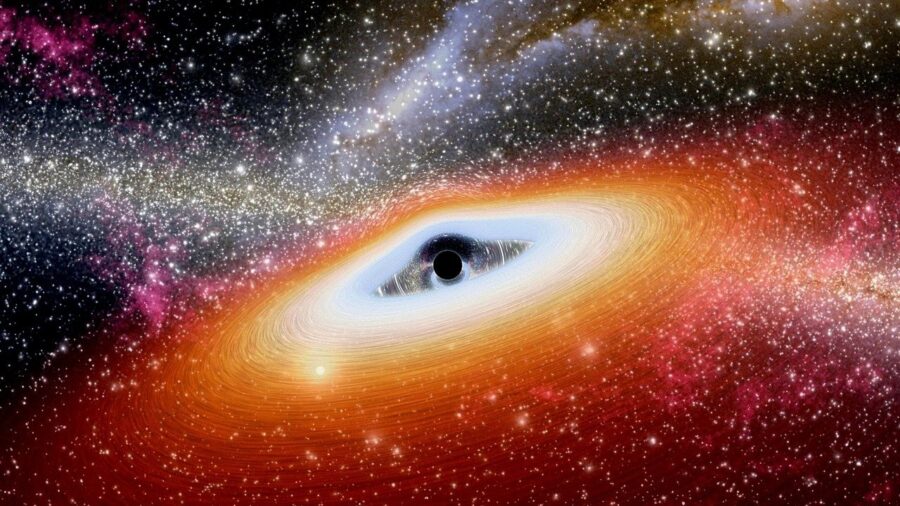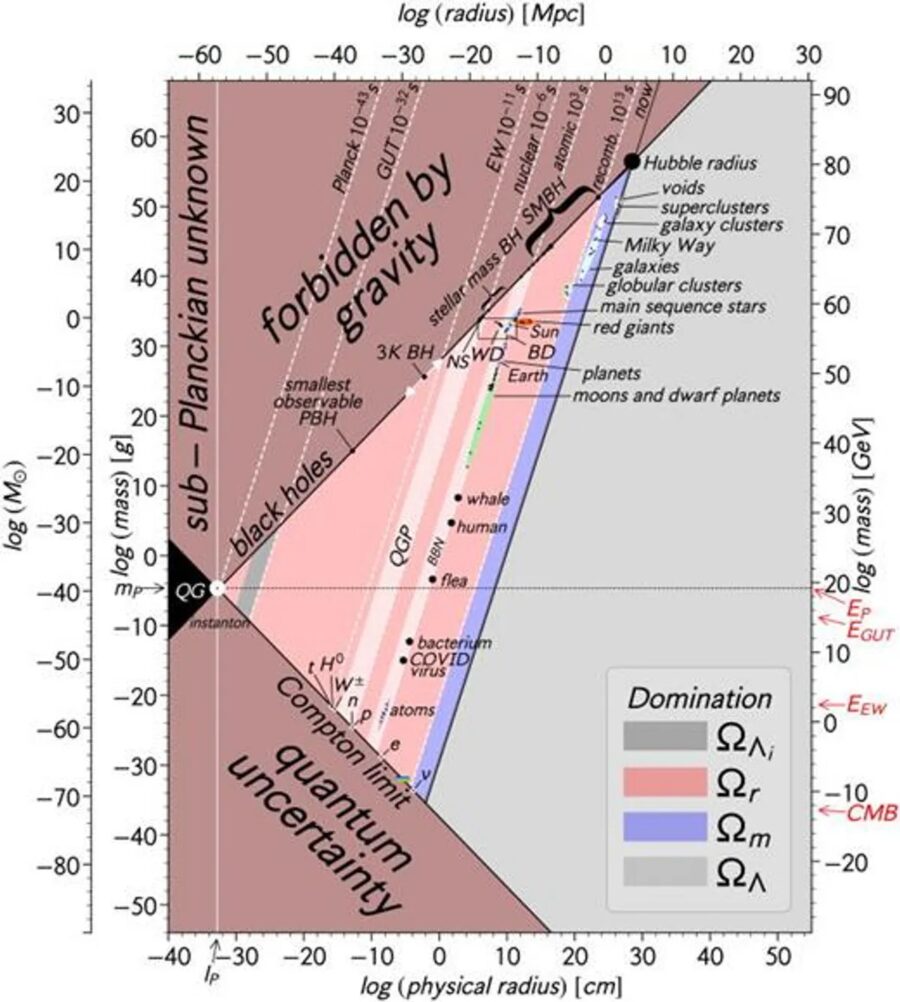The Entire Universe Is Actually A Black Hole?

If you could plot everything in the universe on one single chart, would you? IFLScience brings news that Dr. Charles Lineweaver and Vihan Patel did, and the results of their chart brought about some pretty astonishing questions about black holes. Could the universe we live in be one big black hole?
A team of scientists that mapped out the entire universe discovered our universe is similar in mass and structure to a black hole.
Patel and Lineweaver’s chart plots everything in the universe, from subatomic particles to superclusters, according to mass and radius. The pair utilized a log-log graph to accommodate the wide range of size and mass to be plotted.
On the graph, there are some areas that are “forbidden” by gravity, and somewhere the quantum mechanics of an object are so small and intricate that science cannot be certain, creating an area of quantum uncertainty.

The two researchers drew attention to the black line on the graph, which separates the “forbidden by gravity” section from the area on the chart that plots familiar objects. Take note that the known black holes in the universe populate the black line.
Though the idea of a black hole universe seems improbable, Lineweaver and Patel noted that the universe has always been located along the black line.
The pattern formed by the black holes on the chart runs parallel with the set terms that a larger black hole will have a lower density than a smaller black hole in the universe. Scientists are familiar with this pattern, and the knowledge is established and understood.
If you follow the path of the black line upwards on the chart, you’ll see that the entirety of our observable universe (the Hubble radius) also sits on the line.
If there were a black hole situated on the line that was as large as the universe, we can see with current technology, that black hole would have the same density as the universe. This fact raises the question, is our universe just a giant black hole?
Although the question has already been raised by other cosmologists in the past, they utilized different means to support their inquiries. Though the idea of a black hole universe seems improbable, Lineweaver and Patel noted that the universe has always been located along the black line.

The pair’s measurements of mass on the chart also include dark matter and dark energy (given that mass and energy are interchangeable). When the universe viewable in the Hubble radius grows, so does the mass and energy due to the increase of dark energy.
Though there is evidence that points towards the theory of a black hole universe, the truth of that theory would also mean that everything outside of the Hubble radius would have to be a space vacuum.
The black hole line was still the home of our universe billions of years ago, making its positioning much less questionable as a coincidence. There is also an event horizon, just like that of a black hole, surrounding our observable universe.
Though there is evidence that points towards the theory of a black hole universe, the truth of that theory would also mean that everything outside of the Hubble radius would have to be a space vacuum.
Lineweaver doesn’t think this is a good assumption to uphold, leaving the implications of his intricate chart uncertain. Overall, the scientist spoke, saying that he believes the question at hand will require much more time and thought to clarify.












